Lunch Work
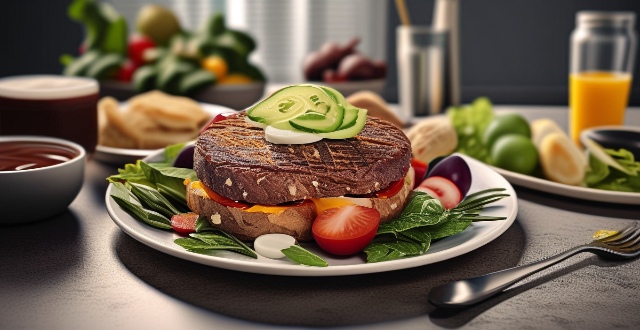
Can exercising during lunch breaks improve work performance ?
Exercising during lunch breaks can improve work performance by boosting energy levels, reducing stress and anxiety, improving mood, enhancing cognitive function, and promoting better sleep quality. To incorporate exercise into your routine, plan ahead, set realistic goals, find a workout buddy, be mindful of time, and make it fun!
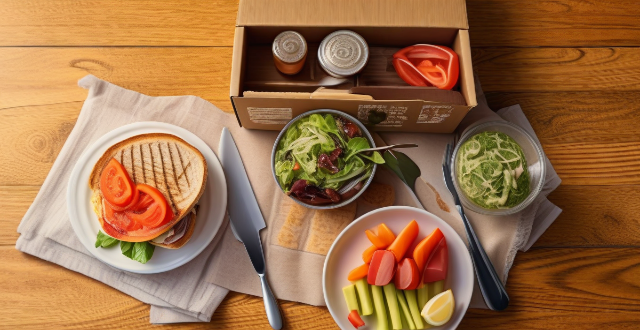
How do I keep my lunch box from getting soggy ?
Packing a lunch can be a healthy and cost-effective option, but no one enjoys opening their lunch box to discover soggy sandwiches or wilted salads. Here are some tips on how to keep your lunch box fresh and dry throughout the day.

How important is it for businesses to provide opportunities for physical activity during lunch breaks or after work hours ?
In today's fast-paced business environment, it is crucial for companies to prioritize the physical and mental well-being of their employees. One effective way to achieve this is by providing opportunities for physical activity during lunch breaks or after work hours. This article will discuss the importance of such initiatives and how they can benefit both the employees and the company as a whole. Regular physical activity has numerous health benefits, including reduced risk of chronic diseases such as heart disease, diabetes, and obesity. By offering opportunities for exercise, businesses can help their employees maintain a healthy weight, lower blood pressure, and improve overall cardiovascular health. Physical activity is also known to have positive effects on mental health, reducing stress, anxiety, and depression, leading to improved mood and increased cognitive function. Providing opportunities for physical activity can also boost employee morale and productivity. Employees who engage in physical activity during lunch breaks or after work hours are likely to return to their tasks with renewed energy and focus, leading to higher productivity and better performance at work. Additionally, when employees feel that their employer cares about their well-being, they are more likely to be satisfied with their job and have a stronger sense of loyalty to the company, leading to improved job satisfaction and reduced turnover rates. Engaging in physical activities together can promote teamwork and collaboration among employees. Participating in sports or fitness classes as a group can help build trust and strengthen relationships within the team. Providing opportunities for physical activity can also facilitate socialization among employees, leading to the formation of friendships and a more cohesive workplace culture. In conclusion, providing opportunities for physical activity during lunch breaks or after work hours is essential for businesses that prioritize the well-being of their employees. These initiatives can have numerous benefits, including improved health, increased productivity, boosted morale, enhanced teamwork, and facilitated socialization. By investing in the physical and mental well-being of their employees, businesses can create a healthier, happier, and more productive workforce.

How can I ensure my lunch box stays cold until lunchtime ?
Keeping your lunch box cold until lunchtime is essential for maintaining the freshness and safety of your food. Here are some tips on how to ensure your lunch stays cool: 1\. Use a high-quality insulated lunch box with thick insulation and a secure lid that can trap cold air inside. 2\. Add ice packs or freezer packs to help keep it cold. Make sure they are clean and properly sealed before placing them next to your food items. 3\. Freeze your food overnight before packing it into your lunch box to help keep everything cold throughout the morning and early afternoon. Just be sure to thaw it slightly before eating so it's not too hard to chew. 4\. Store your lunch box in a cool place like a pantry or refrigerator instead of leaving it out on the counter where heat from appliances might warm it up. 5\. Avoid opening your lunch box too often, as every time you open it, you let warm air in and cold air out. Try to resist the temptation to peek inside unless necessary. 6\. Use a chilled snack container within your lunch box for snacks like fruits, vegetables, or yogurt, so even if your main meal gets slightly warmer, your snacks will still be refreshingly cool. 7\. Consider investing in a portable refrigerator or cooler bag specifically designed for food storage if you need your lunches to stay cold for extended periods. These devices typically use either ice or electronic cooling systems to maintain low temperatures. 8\. Plan ahead and eat early if your schedule allows, as the longer your lunch sits at room temperature, the less likely it is to remain cold and safe to consume.

What are some tips for packing a balanced lunch box ?
When packing a lunch box, it's essential to include a variety of foods from different food groups to ensure a balanced meal. Here are some tips for packing a nutritious and satisfying lunch box: 1. Start with a protein source like lean meats, seafood, or plant-based proteins. 2. Include whole grains such as whole wheat bread, brown rice, or quinoa. 3. Add fruits and vegetables like fresh or dried fruits and crunchy vegetable sticks. 4. Incorporate dairy or non-dairy alternatives like yogurt, cheese, or almond milk. 5. Don't forget healthy fats from nuts, seeds, avocado, or olives. 6. Include snacks and desserts like trail mix, granola bars, or dark chocolate. 7. Stay hydrated with water, herbal tea, or coconut water. 8. Pack smart by using reusable containers, ice packs, and divided lunch boxes. By following these tips, you can create a lunch box that is not only delicious but also provides the necessary nutrients to keep you energized throughout the day.

Can you recommend any tasty and healthy low-calorie soup recipes for lunch ?
Here is a topic summary for the text: The text recommends three tasty and healthy low-calorie soup recipes for lunch. The first recipe is Tomato Basil Soup, which is low in calories and packed with vitamins and antioxidants. The second recipe is Carrot Ginger Soup, which is healthy and comforting with a sweet and spicy flavor. The third recipe is Broccoli Cheddar Soup, which is a bit higher in calories but still a healthy and delicious option with a rich and flavorful taste. All three recipes are easy to make and can be enjoyed as a satisfying and nutritious lunch option.

What are some good options for gluten-free lunch box meals ?
Gluten-free lunch box meals offer variety and nutrition for those with dietary restrictions. This guide suggests sandwich alternatives, protein-packed options, vegetable-focused meals, grains and legumes, and desserts and snacks that are gluten-free. It encourages creativity in meal planning to ensure enjoyable and nutritious midday meals.

What are some good ideas for quick lunches ?
When it comes to quick lunches, there are plenty of options that are both healthy and satisfying. Here are some ideas: 1. Sandwiches: Peanut Butter and Jelly, Turkey and Cheese, Hummus and Veggie Wrap 2. Salads: Greek Salad, Chicken Caesar Salad, Quinoa Salad 3. Soups and Stews: Tomato Soup, Chicken Noodle Soup, Vegetable Stew 4. Pasta Dishes: Spaghetti with Marinara Sauce, Macaroni and Cheese, Pasta Salad 5. Breakfast for Lunch: Egg and Cheese Sandwich, Oatmeal, Yogurt Parfait These are just a few ideas to get you started on your quick lunch journey. Remember to mix and match ingredients to create your own unique combinations!

What are the best containers to pack a lunch box ?
The text discusses the importance of choosing the right containers for packing a lunch box, highlighting durability, leak-proofness, ease of cleaning, and safety for food storage as key considerations. It then presents five types of containers: glass, stainless steel, plastic with lids, bento boxes, and silicone bags, detailing their pros and cons in terms of non-toxicity, weight, microwave and dishwasher safety, versatility, and durability. The conclusion suggests that the best container depends on individual needs and preferences, advising consideration of factors like durability, safety, and suitability for intended use when making a decision.

Can you suggest any easy-to-make lunch box recipes ?
The text provides a list of easy-to-make lunch box recipes. The first recipe is for grilled chicken and vegetable skewers, which involves marinating chicken breasts in a favorite sauce, cutting vegetables into large chunks, threading them onto skewers, and grilling until cooked through. The second recipe is for hummus and veggie wrap, which involves spreading hummus on a whole wheat tortilla, adding sliced cucumbers, carrots, and bell peppers, rolling up tightly, and slicing in half. The third recipe is for tuna salad lettuce wraps, which involves mixing canned tuna with mayo, lemon juice, and chopped celery, spooning the mixture onto lettuce leaves, and rolling up. The fourth recipe is for quinoa salad, which involves cooking quinoa according to package instructions, tossing with chopped tomatoes, cucumbers, feta cheese, and a simple vinaigrette, and packing in a container with pita chips or crackers. The fifth recipe is for egg salad sandwich, which involves hard boiling eggs, chopping them up, mixing with mayo, mustard, salt, and pepper, and serving on whole grain bread with lettuce and tomato. The sixth recipe is for Caprese salad, which involves slicing fresh mozzarella and tomatoes, drizzling with olive oil and balsamic vinegar, adding fresh basil leaves, and seasoning with salt and pepper. The seventh recipe is for turkey and cheese roll-ups, which involves laying out slices of turkey and cheese on a slice of bread, rolling up tightly, and slicing into bite-sized pieces. The eighth recipe is for Greek yogurt parfait, which involves layering Greek yogurt, granola, and fresh fruit in a jar or container, and topping with honey or maple syrup if desired. The ninth recipe is for black bean and corn salad, which involves rinsing and draining a can of black beans, mixing with canned corn, diced red onion, cherry tomatoes, and a lime vinaigrette, and serving chilled with tortilla chips or crackers. The tenth recipe is for avocado toast, which involves mashing an avocado with lime juice and salt, spreading on toasted whole grain bread, and topping with everything bagel seasoning or red pepper flakes for extra flavor.

What are some healthy lunch box ideas for kids ?
Here are some healthy lunch box ideas for kids: - Whole Grain Sandwiches: Whole grain bread or wraps provide complex carbohydrates and fiber. Fillings like lean turkey, chicken, or hummus offer protein and flavor. Add sliced veggies like cucumbers, tomatoes, and bell peppers for extra nutrients. - Fruit and Veggie Platters: Cut up a variety of fruits and vegetables such as apples, grapes, carrots, and cherry tomatoes. Include a low-fat dip like yogurt or hummus for added fun and taste. - Yogurt Parfaits: Layer plain Greek yogurt with granola and fresh berries for a delicious treat. This combination provides calcium, protein, and antioxidants. - Quinoa Salad: Cooked quinoa mixed with roasted veggies, chickpeas, and a simple vinaigrette. This salad offers plant-based protein and essential vitamins and minerals. - Homemade Pizza Rolls: Use whole wheat tortillas as the base and top with tomato sauce, cheese, and veggies. Bake until crispy for a fun twist on traditional pizza. - Egg Muffins: Whip up mini egg muffins using eggs, spinach, cheese, and diced tomatoes. These muffins are high in protein and easy to grab on the go. - Healthy Snacks: Pack individual servings of nuts, seeds, or dried fruit for an energy boost. Choose options that are low in sugar and sodium.

What are the most effective ways to incorporate movement into a busy work schedule ?
Incorporating movement into a busy work schedule is crucial for maintaining physical and mental well-being. Here are some effective ways to add movement to your day: 1. Start with small changes like taking frequent breaks, walking meetings, and using the stairs. 2. Incorporate exercise into your commute by cycling or walking to work, or getting off public transportation early and walking the rest of the way. 3. Make the most of lunch breaks by doing physical activities like going for a walk or joining a fitness class. 4. Invest in office ergonomics such as standing desks or treadmill desks. 5. Set reminders and goals using activity trackers or calendar blocking. 6. Engage in leisure activities that involve movement, such as hobbies or social activities with friends or family. By prioritizing physical activity and making it a part of your daily routine, you can improve your health, boost your productivity, and enhance your overall well-being.

How does cryptocurrency work ?
Cryptocurrency is a digital or virtual currency that uses cryptography for security, operating independently of a central bank. It allows direct transfers between individuals without intermediaries like banks. Key components include cryptography (public and private keys, encryption, decryption), blockchain technology (decentralization, transparency, immutability, consensus mechanism), mining (Proof of Work, Proof of Stake, mining rewards, network security), and smart contracts (automation, efficiency, security, transparency). These technologies work together to create a secure, decentralized, and transparent digital payment system with fast, low-cost, and borderless transactions while maintaining user privacy and security.

What is the best time to exercise for better sleep ?
This article discusses the best time to exercise for better sleep. Regular physical activity is known to improve sleep quality, but the timing of your workout can significantly impact how well you rest at night. The ideal time to exercise is in the morning or early afternoon, as these times allow for ample cooling down and winding down periods before bed. However, individual preferences may vary, and consistency is key; finding a time that works for you and sticking to it will have the most significant impact on your sleep.
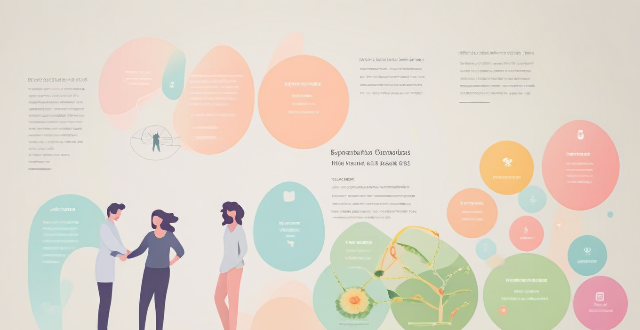
What are some tips for women to manage work-life balance effectively ?
This topic provides valuable insights and actionable strategies for women aiming to achieve a healthier work-life balance. The suggestions range from practical time management tips to self-care practices, emphasizing the importance of setting boundaries, delegating responsibilities, and leveraging technology. By prioritizing personal well-being and embracing flexibility, women can enhance their productivity and overall life satisfaction. The text underscores the necessity of building a support network and regularly reflecting on one's approach to balance, highlighting that achieving an ideal work-life equilibrium is a dynamic and ongoing process.
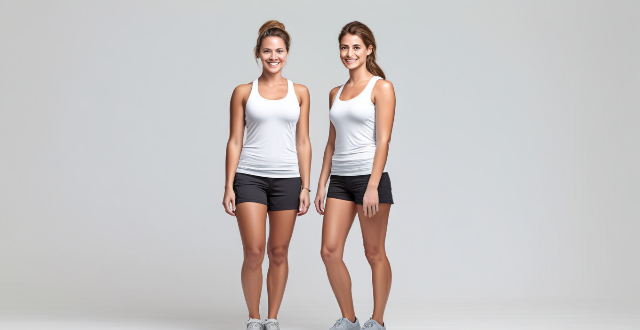
How can women achieve a work-life balance ?
Achieving a work-life balance is crucial for women who often face additional societal expectations and responsibilities. Some strategies that can help include prioritizing self-care, setting clear boundaries between work and personal life, managing time effectively, seeking support when needed, and embracing flexibility in work arrangements. By implementing these strategies, women can create a more harmonious balance between their professional and personal lives.

What are the safety regulations for electrical work ?
Electrical work involves a high level of risk, and it is essential to follow strict safety regulations to prevent accidents and injuries. Here are some of the key safety regulations for electrical work: - Always wear appropriate personal protective equipment (PPE), such as insulated gloves, safety glasses, and non-conductive shoes. - Turn off the power before starting any electrical work, and use a lockout/tagout system to prevent accidental energization of equipment. - Use insulating materials and tools designed for live work when working near live circuits. - Assess confined spaces for potential hazards before entering and use ventilation systems to maintain safe air quality. - Only qualified personnel should work with high voltage circuits, using specialized tools and following specific procedures for testing and inspection. - Know emergency procedures, including the location of emergency equipment and how to call for help.

What are the potential benefits and drawbacks of remote work in the future ?
The potential benefits of remote work in the future include flexibility and enhanced work-life balance, productivity gains, cost savings, access to global talent, and a positive environmental impact. However, there are also potential drawbacks such as isolation and lack of social interaction, communication challenges, work-life boundary blurring, management and supervision issues, and security risks. It is important for individuals and organizations to consider these factors when deciding on the feasibility and implementation of remote work arrangements.

How can parents balance work and providing quality education at home ?
Balancing work and providing quality education at home can be a challenging task for parents. However, with proper planning and execution, it is possible to achieve both goals effectively. In this article, we will discuss some strategies that parents can use to balance their work responsibilities while ensuring their children receive a high-quality education at home.
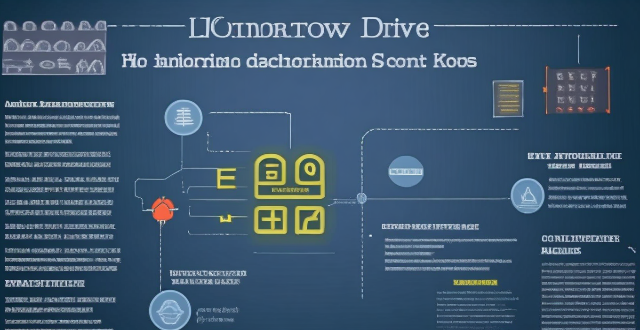
How does a multi-motor drive system work ?
The text explains how a multi-motor drive system works, its components, and benefits. It describes the process of power conversion, control signals, motor operation, mechanical transmission, and feedback adjustment in such systems. The advantages include improved efficiency, increased redundancy, and enhanced control.

What role does flexible working play in helping women achieve a better work-life balance ?
Flexible Working, Women, Work-Life Balance
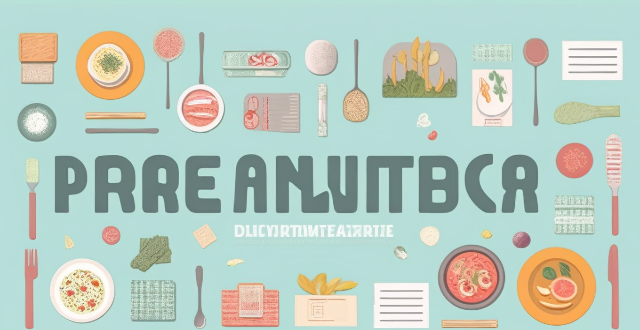
What is the daily routine of a celebrity like ?
The text provides an overview of the daily routine of a celebrity, which includes exercise, breakfast, checking social media and emails, work commitments, lunch break, appearances or events, dinner parties, relaxation time, and bedtime routine. Despite their hectic schedules, celebrities prioritize self-care and maintaining a healthy lifestyle.

How does work-life balance affect women's career growth and development ?
Work-life balance is crucial for women's career growth, reducing stress and increasing job satisfaction. Women face challenges achieving this balance due to societal expectations and lack of employer support. Strategies for achieving work-life balance include prioritizing self-care, seeking support from employers and coworkers, and building a strong support network.

How does PPE contribute to creating a safe work environment ?
PPE's Role in Creating a Safe Work Environment Personal Protective Equipment (PPE) is vital for establishing a safe work environment by providing a physical barrier between workers and potential hazards, reducing the risk of injuries and illnesses. PPE contributes to safety in various ways, including preventing direct contact with hazardous substances, reducing exposure to harmful agents, providing physical support and protection, enhancing visibility and awareness, promoting compliance with regulations, encouraging responsible behavior, and contributing to ergonomic well-being. By implementing and maintaining the use of PPE, employers can significantly reduce the number of work-related injuries and illnesses, creating a safer and more secure work environment for all employees.

What strategies can women use to prioritize their mental health while balancing work and family responsibilities ?
This text discusses the importance of prioritizing mental health for women, especially while they are juggling work and family responsibilities. It provides several strategies to help achieve a healthy work-life balance, including developing a self-care routine, setting boundaries, building support systems, managing time effectively, and engaging in self-reflection and growth activities. The text emphasizes that taking care of oneself is not selfish but essential for maintaining overall well-being and happiness.

How do celebrities balance their public image with their charity work ?
Celebrities navigating the challenge of maintaining a positive public image while engaging in charity work can adopt several strategies: 1. **Authenticity**: Genuine care for supported causes resonates with the public and fans. 2. **Transparency**: Open communication about charitable activities builds trust and avoids overpromising. 3. **Alignment with Personal Brand**: Selecting causes that align with their personal brand maintains consistency in their public image. 4. **Engage with Fans**: Interacting with fans about charity work fosters community and encourages involvement. 5. **Consistency**: Regular involvement shows long-term commitment rather than fleeting interest. 6. **Avoid Controversy**: Stay away from polarizing issues to prevent backlash on public image and charity. 7. **Collaborate with Other Celebrities**: Joint efforts amplify reach and show unity among peers. 8. **Measure Impact**: Showcasing tangible results demonstrates the effectiveness of their charitable efforts. 9. **Seek Professional Advice**: Consulting experts helps navigate complexities in balancing public image and charity work. By following these strategies, celebrities can balance public image with charity work, ensuring benefits for both their supported causes and their reputation.